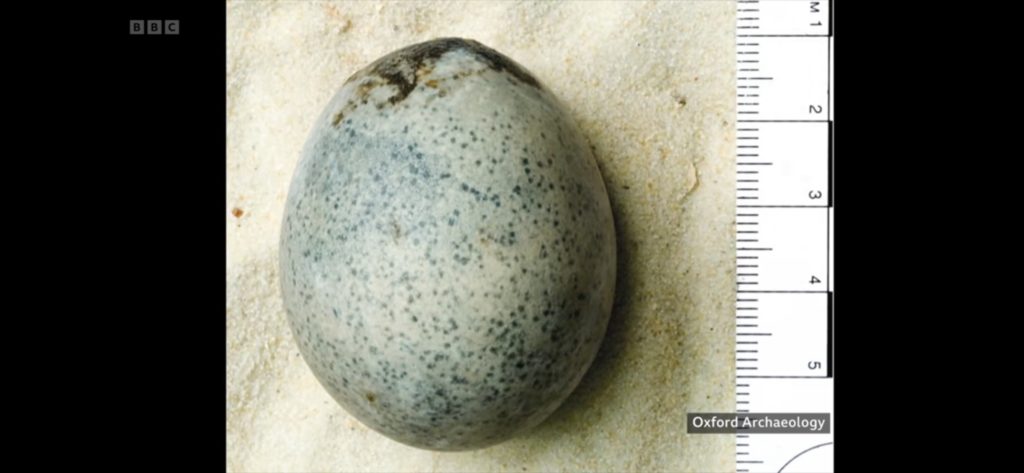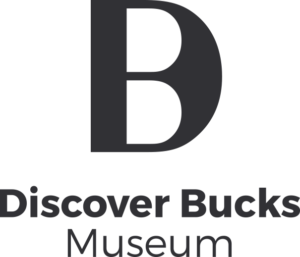14th February 2024 Joint Statement regarding the Berryfields Egg from;
Buckinghamshire Council Archaeology Service
DGB Conservation
Discover Bucks Museum
Natural History Museum
Oxford Archaeology
On January 10th 2024 Buckinghamshire Council Archaeology Service posted a blog update in regards further research into the Berryfields egg The Berryfields Roman Egg |Buckinghamshire Council
Following media interest, we wish to provide the following information.
Background to the discovery
Quote from Edward Biddulph, Senior Project Manager at Oxford Archaeology
“The egg had been placed with two other eggs in a waterlogged pit between c. AD 270 and 300, which means that the egg is at least 1,700 years old. The pit had originally been used to extract water for malting and brewing. After the inhabitants of the Roman roadside settlement at Berryfields had stopped using the pit for malting and brewing, they used the pit for ritual purposes, placing various objects, among them coins, ceramic jars, a basket, and of course eggs into the pit as food and other offerings to the gods or for luck (just as we still throw coins into fountains). The eggs survived in a layer of soft wet silt or mud. Two of the eggs broke on exposure to the air during excavation, but one was recovered intact. “
Conservation of the egg
Quote from Dana Goodburn-Brown, DGB Conservation
“I took the egg for a micro-CT examination at The Imaging Centre for Life Sciences at Kent University, where Dr. Christopher Dunmore carried out the imaging work – it was an exciting moment when we first saw the air bubble inside, and then decided to turn the egg and look again, to see if the bubble would move… which it did. I then contacted the conservation depart at the Natural History Museum to see if their conservators have ever dealt with such a challenging find – Arianna Bernucci kindly shared her thoughts and experiences with conserving eggshells; put us in touch with the museum’s ‘egg expert’; and arranged a meeting with all of us concerned. “
Current Location of the egg
Quote from Brett Thorn, Keeper of Archaeology at the Discover Bucks Museum
“Discover Bucks Museum preserves the archives from all archaeological work across the county, including the Berryfields excavations, from the edge of Aylesbury. This enables future research to be carried out on these sites. As we are constantly learning more about our past, and as new scientific techniques are developed, these archives which are carefully housed in museums enable the sites to be re-examined, which can lead to new discoveries and understanding.”
What we know so far
Quote from Douglas G. D. Russell, Senior Curator: Birds’ Eggs & Nests at the Natural History Museum
“The egg is, we believe, unique, it is the oldest surviving example of an inadvertently preserved avian egg found in the UK and we do not know of any equivalent globally. We do not know exactly what remains in the egg as such (as the yolk and albumen will have largely decomposed) but CT-scanning was a good start. There are older eggs that were deliberately preserved. For example, the Natural History Museum holds a series of mummified Sacred Ibis eggs from ancient Egypt. Both the Egyptian mummified eggs and these Roman eggs were offerings to gods. What is fascinating and sets these Roman eggs apart is that, as far as we can tell, they relatively fresh and unaltered when buried and it is simply that the soil conditions unintentionally preserved them. “
What we don’t know
Quote from Douglas G. D. Russell, Senior Curator: Birds’ Eggs & Nests at the Natural History Museum
“Currently we know relatively little. We do not know exactly what the overall state of preservation is or indeed what is left in terms of contents. We do not know exactly which species laid it etc. There are a range of different imaging and analysis techniques available here at the Natural History Museum (NHM) but chemical / molecular analysis, imaging techniques (e.g. Electron microscopy Micro CT-scanning etc) alongside comparison with our comparative collections may all prove helpful. “
Further Research
We are at a very early stage and have no funding or formal plans. However, we recognise the huge research potential of the egg. Future Research Questions are divided into three categories, museologically, ornithologically, and archaeologically.
Museological
•How can we best stabilise and conserve the egg for long term storage and/or display?
Ornithological
•What species is the egg? We need to look at how that might be achieved using a range of imaging and analysis techniques potentially.
• Was it was taken from a bird in the wild or a domesticated bird?
• What might this information tell us about the bird and the environment in which it lived?
Archaeological
• Once we have further information about the egg, what more can this tell about Roman life, for example relating to ritual deposition, and animal introductions?
Image © Oxford Archaeology




